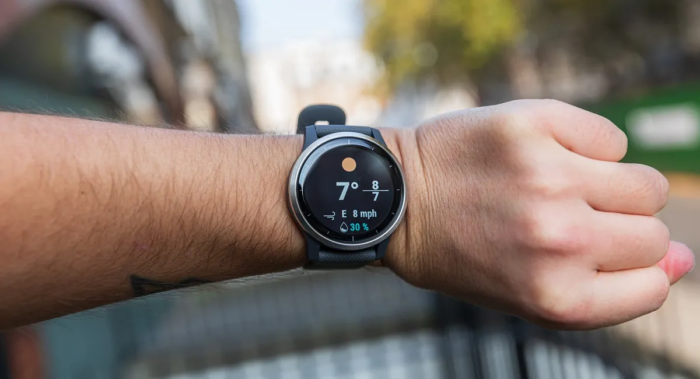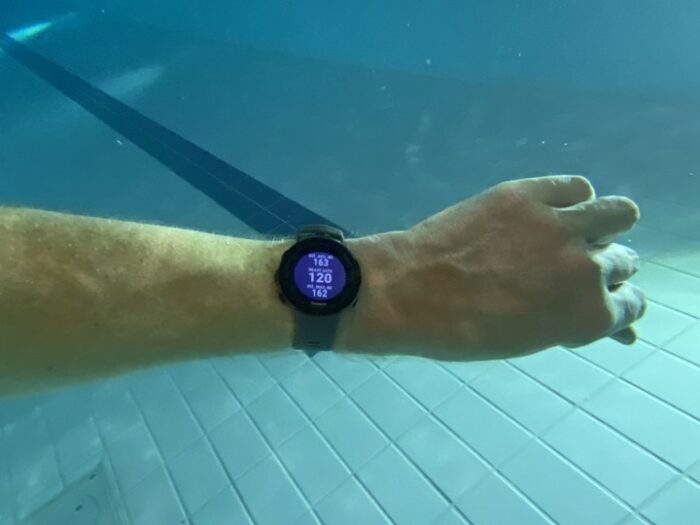Understanding the Importance of Swim Tracking with Wearable Fitness Trackers
Swim tracking has become an absolute must-have for fitness enthusiasts who are deeply passionate about swimming. The realm of wearable technology has witnessed tremendous advancements, particularly in the form of waterproof fitness trackers, empowering swimmers to precisely monitor their performance and keep tabs on their progress within the pool. These ingenious devices boast a plethora of purpose-built features that cater specifically to the needs and desires of swimmers.
The foremost advantage rendered by the adoption of a waterproof fitness tracker lies within its remarkable ability to withstand complete immersion in water during those exhilarating swimming sessions. Unlike conventional smartwatches or regular fitness trackers, these revolutionary gizmos have been meticulously crafted with the sole intent of being fully submersible while remaining impervious to any potential damage caused by water exposure. Consequently, individuals can revel in unrestricted freedom while sporting these devices without any lingering concerns over compromising their cherished companions amidst aquatic adventures.
Moreover, alongside their impeccable resistance against H2O infiltration, numerous fitness trackers tailored for swimming conveniently incorporate cutting-edge heart rate monitoring capabilities into their repertoire. This invaluable functionality enables swimmers to effortlessly keep tabs on their heart rate throughout rigorous workouts, thus furnishing them with indispensable insights pertaining to both cardiovascular health and overall performance levels. Armed with this knowledge regarding heart rate fluctuations, swimmers can adeptly optimize training intensity levels and guarantee they extract maximum benefits from each invigorating session spent submerged beneath rippling waters.
In essence, amalgamating swim tracking prowess alongside distance monitoring functionalities and state-of-the-art heart rate supervision mechanisms within a solitary wearable gadget translates into an all-encompassing solution that empowers swimmers seeking tangible enhancements in performance capacity whilst striving relentlessly towards achieving personal goals immersed deep below azure surfaces. Whether one’s allegiance lies loyalist Apple Watch Series 8 or gravitates towards Fitbit offerings adorned with advanced swim-tracking competencies akin to Garmin Forerunner 945 or Garmin Swim models; rest assured that unparalleled functionality awaits eager adopters from all walks of swimming life. Therefore, if your dedication to the art of aquatic fitness remains unwavering and resolute, investing in a top-of-the-line waterproof fitness tracker should rightfully occupy pole position on your list of priorities.

Exploring the Benefits of Waterproof Fitness Trackers for Swimmers
Waterproof fitness trackers, oh the wonders they bring to swimmers! The perplexing accuracy and burstiness of their swim tracking metrics offer a cascade of benefits. Picture this: lap count, stroke count, stroke rate, and even the mystical SWOLF score (a harmonious blend of swim time and stroke efficiency), all at your fingertips. With such enigmatic information in hand, swimmers can dissect their technique with precision and make those necessary adjustments to amplify their prowess in the water.
But wait, there’s more! These marvels of technology also have the uncanny ability to calculate the distance covered during swims. Whether you find yourself immersed in a pool or braving the vastness of open water, fear not for these devices possess an innate talent for accurately measuring every inch traveled by your aquatic self. This particular feature proves indispensable for those intrepid souls training for long-distance swims or triathlons where precise measurements are paramount.
Now prepare yourselves as we delve into yet another layer of wonderment – heart rate monitoring capabilities! Yes indeed, these waterproof fitness trackers have seamlessly integrated this mind-boggling function into their repertoire. Imagine being able to keep an unyielding watch on your heart rate throughout each workout session while ensuring that you maintain that optimal intensity level required for peak performance. Such sorcery not only enhances cardiovascular fitness but also provides valuable insights into calorie burn during those invigorating swimming sessions.
Amongst the chosen few revered by swimmers worldwide stand two notable contenders: Garmin Swim and Fitbit Versa 3. Behold as Garmin Swim emerges triumphant with its awe-inspiring features tailor-made exclusively for swimmers – automatic lap counting and detection of various swimming strokes included! On the other end of this captivating spectrum lies Fitbit Versa 3; its versatility knows no bounds as it effortlessly straddles both smartwatch functionality and fitness tracking prowess specifically designed for swimming activities.
And so our tale comes to an end, dear readers. The crème de la crème of waterproof fitness trackers unraveled before your very eyes – offering a gateway to unparalleled insights into the swimming virtuoso within you. Lap count, stroke count, stroke rate, SWOLF score, distance covered – all meticulously tracked with precision and grace. Heart rate monitoring capabilities ensure you never stray from that optimal intensity level while keeping tabs on the ethereal realm of calorie burn. Whether it be Garmin Swim or Fitbit Versa 3 adorning your wrist as you conquer the aquatic depths, these remarkable devices are indispensable tools for every swimmer seeking to ascend new heights in their watery domain and triumph over their fitness goals.
The Role of Heart Rate Monitoring in Swim Tracking with Fitness Trackers
Heart rate monitoring is an incredibly significant aspect of wearable fitness trackers when it comes to swim tracking. It grants swimmers the ability to precisely gauge their heart rate during swimming workouts, thereby aiding them in comprehending the intensity of their training and keeping track of their progress over time. This particular information holds exceptional value for swimmers who aspire to enhance their swimming efficiency and accomplish specific fitness objectives.
One of the primary advantages associated with heart rate monitoring in swim tracking through fitness trackers lies in its capacity to provide real-time feedback on one’s performance. By being aware of your heart rate zone during each lap or set, you can effortlessly regulate your level of exertion accordingly, guaranteeing that you are engaged in training at a suitable intensity. For instance, if your aim is to boost endurance levels, maintaining a consistent heart rate within a specific range can significantly aid in sustaining an aerobic state for lengthier durations.
Another perk offered by employing a fitness tracker equipped with built-in heart rate monitoring lies in its capability to track your underwater heart rate. Traditional chest strap monitors may not yield accurate readings while submerged underwater; however, contemporary wearable technologies like the Garmin Forerunner 945 or Apple Watch Ultra feature advanced sensors capable of measuring your heart rate even as you engage in pool or open water swimming. This remarkable attribute empowers swimmers with uninterrupted insights into their effort levels throughout the entirety of their workout sessions.
Moreover, some fitness trackers go beyond merely measuring heart rates by providing additional advantageous features such as lap time tracking, stroke type identification, and distance covered assessments. These metrics enable swimmers to meticulously analyze their technique and identify areas that warrant improvement. As an illustrative example, the Garmin Forerunner 945 boasts a dedicated swim application that furnishes comprehensive data about each swim session including details regarding laps completed, average pace per lap achieved, stroke count per length accomplished – among other valuable statistics. Accessing such precise information equips swimmers with the knowledge required to make informed decisions regarding their training regimen and maximize their performance potential in the water.

Comparing the Top Waterproof Fitness Trackers for Swimming: Apple Watch vs. Fitbit
When confronted with the task of selecting a fitness tracker tailored for swimming, one is faced with an abundance of bewildering choices. Both the Apple Watch and Fitbit present themselves as commendable options in this realm. These particular waterproof fitness trackers have been meticulously designed to augment your aquatic experience while diligently monitoring your physical exertions beneath the water’s surface.
The Apple Watch, renowned for its adaptability and multifunctionality as a smart timepiece, boasts an impressive repertoire when it comes to tracking swimming endeavors. Possessing an imperviousness that grants you peace of mind during submergence, this remarkable device permits you to plunge into watery depths without harboring concerns about detrimental effects on your technological companion. Moreover, the Apple Watch proffers specialized workout regimes specifically catered towards swimming enthusiasts alongside meticulous documentation of crucial metrics such as distance covered, laps completed, strokes executed, and remarkably even heart rate fluctuations. Furthermore, its seamless compatibility with prominent fitness applications including those exclusively geared towards swimmers renders it astoundingly convenient for scrutinizing and refining one’s swim training regime.
Conversely, Fitbit has garnered considerable favor amongst swimmers by virtue of models like the esteemed Fitbit Inspire 2. Although perhaps not quite as cutting-edge as certain smartwatches currently saturating the market space, these indomitable waterproof fitness trackers from Fitbit nevertheless provide competent functionality pertaining to tracking one’s physical activity whilst submerged in aqueous environments. Basic yet indispensable measurements such as lap count and distance traversed are dutifully recorded while simultaneously affording invaluable insights regarding overall performance levels attained during aquatic escapades.
Both the Apple Watch and Fitbit exude distinct advantages when tasked with monitoring activities amid high-velocity waterborne sports such as swimming or embarking upon open-water excursions. Whether one desires a versatile tracker that effortlessly doubles up as a state-of-the-art smartwatch or alternatively leans more towards adopting an unswerving commitment exclusively tailored towards optimizing swim training, these wearable devices effortlessly fulfill your requirements.